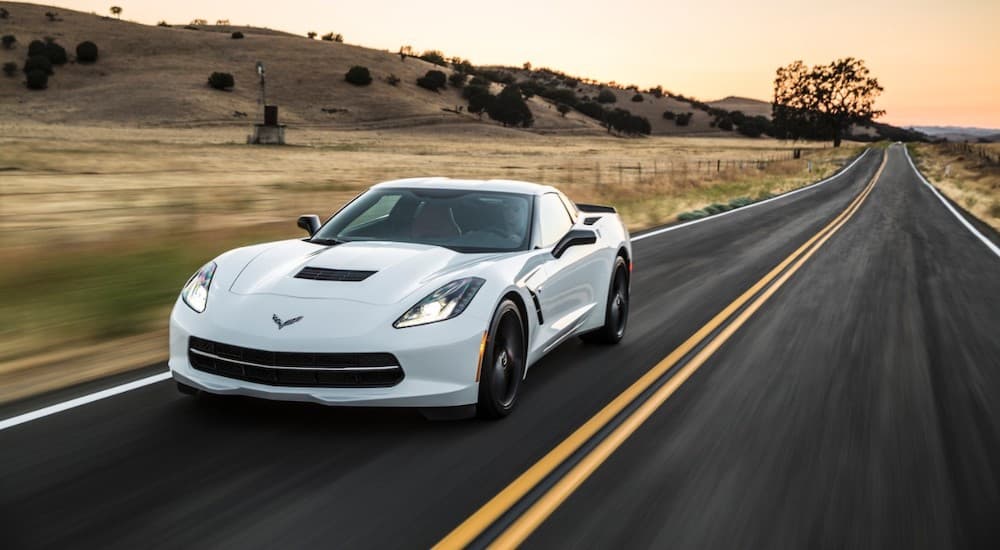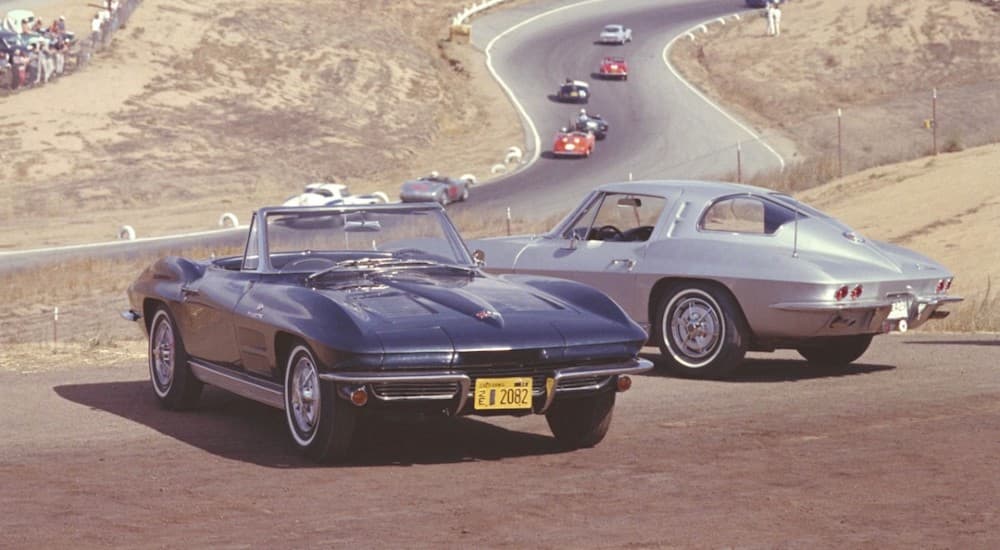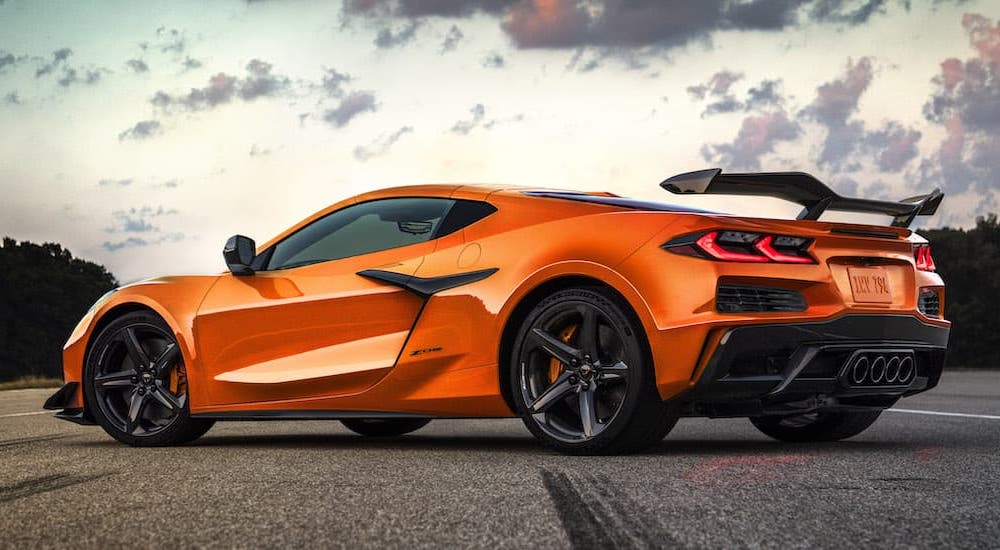
2023 marks the 70th anniversary of the Chevrolet Corvette, and Parkway Chevrolet, your Magnolia Chevy dealer, is joining in on the celebration. Given that the Corvette has been such a prominent staple of the Chevy lineup for so many years, it is only fitting that it gets a big to-do.
The latest Chevy Corvette is as sleek and powerful as ever, shaped for impressive driving performance with an aerodynamic design. Imbued with technology and safety features, the current Corvette is contemporary while still embodying the essence of the original.
Before we jump into the details of the 2023 Corvette lineup, let’s take a look back at what the past 70 years have offered to consumers. How did the Corvette come into being, and just what made it such a popular model? It’s time to dive in and find out.
How It All Began: 1953-1962
The Chevy Corvette had its humble beginnings in Flint, Michigan, where the first 300 units were manufactured by hand. This all came after General Motors revealed its “dream car” at the Motorama show held in New York. It was only after the initial production year that the Corvette was moved to St. Louis (then, in 1981, to Bowling Green, Kentucky).
In 1956, Chevy tweaked the Corvette’s style, giving it rolled-up windows, more sculpted sides, and exposed headlights. This also marked the first year that a factory-installed hardtop was offered. The following year, a four-speed manual transmission and fuel injection system became available.
Dual headlights came in 1958. For the final model year of the first generation, Chevy gave the Corvette tail lights integrated into the rear fenders. Also, this was the final year for the large, tooth-like front grille.

The Second Generation: 1963-1967
Bill Mitchell’s 1959 Stingray Racer provided inspiration for the Corvette’s second generation. Debuting for 1963, this generation brought about the addition of the coupe body style. There were also 199 Z06 units made for the 1963 Corvette. This was also the only year in which the split rear window was offered.
In 1965, big block V8 engines were introduced with the 396 cu.in. L78, which served up 425 hp. The following year, a 427 cu.in. engine was added. While it was also rated at 425 hp, it provided far more torque. The 1967 model year offered the L88 engine, although only 20 of those were ever made.
The Third Generation: 1968-1982
The third generation introduced the T-top removable panels and pop-up headlights. The ZR1 package became available the following year and marked the Corvette’s first racing package since the original Z06. A small block V8 dubbed the LT1 hit the line in 1970, and for the next model year, virtually everything remained unchanged. The 500,000th Corvette rolled off the line in 1977, demonstrating the success of this all-American sports car.
The Fourth Generation: 1984-1996
Chevy took 1983 off to focus on revamping the Corvette for the fourth generation in 1984. This model was 24 percent more aerodynamic than the outgoing generation and could achieve a top speed of 150 mph. A year later, Chevy resumed manufacturing convertible bodies for the Corvette, which had ceased in 1975.
In 1993, the 40th anniversary was marked by an optional package for any model. It included a Ruby Red interior design to match the exterior paint job. The National Corvette Museum opened the following year. The 1996 model year brought about the introduction of the Grand Sport and a Collector’s Edition Corvette.
The Fifth Generation: 1997-2004
For the fifth-generation Corvette, Chevy mounted the transmission on the rear axle for better weight distribution and used a hydroformed box frame to enhance the rigidity of the car. A hardtop model with a permanently-fixed roof panel debuted in 1998 to join the Targa top and convertible models.
The new LS1 V8 engine delivered up to 350 hp, depending on the model year. While it was not the most powerful engine to ever be offered on a Corvette, it became a well-liked option. For greater performance, the Z06 model was resurrected for the 2001 model year, boasting a retuned LS6 engine for up to 405 hp.
The Sixth Generation: 2005-2013
The sixth generation featured a brand-new design with exposed headlights returning for the first time since they were replaced by pop-up units after the 1963 model. The Z06’s production was paused for 2005, but it returned in 2006 with a new small block V8 that generated 505 hp and was paired with a six-speed manual transmission.
A new model, the ZR1, debuted in 2009 and received its power from a supercharged V8 that made 638 hp. The 60th anniversary of the Corvette was celebrated with the 2013 Corvette 427 and its monstrous 7.0L V8 engine, thereby bringing the sixth generation to a close.
The Seventh Generation: 2014-2019
The seventh generation of the Corvette lasted from 2014-2019. It started things off with a standardized aluminum frame for weight reduction and features like a seven-speed manual transmission with rev-matching. A new LT1 V8 engine became the strongest standard motor in any Corvette. In 2015, the popular Z06 returned to the lineup with a supercharged engine. The following few years brought a slew of changes, such as the return of the Grand Sport in 2017 and a 755-hp ZR1 for the final model year.
The Current Generation: 2020-present
That brings us to the current eight-generation Corvette. A mid-engine design became standard in 2020, and the new 6.2L V8 engine delivers up to 495 hp and comes paired with a dual-clutch automatic transmission. The following year added wireless connectivity for Android Auto and Apple CarPlay, and Magnetic Ride Control became available without adding the Z51 package.
In 2022, a new IMSA GTLM Championship Edition offered buyers specialized graphics and colors to celebrate the success of Corvette Racing’s C8.R race cars. However, not a whole lot else changed. It is easy to assume that was because Chevy was amping up for the 70th anniversary in 2023.

Turning 70 in Style
After 70 years on the market, you’d think the Corvette might’ve gotten a bit boring, but you’d be sorely mistaken. For the 70th Anniversary Edition (which is exclusively available to the 3LT trim level), Chevy is giving the Corvette two unique exterior colors: Carbon Flash Metallic or White Pearl Metallic Tricoat. Both can come with racing stripes. Inside are red seat belts, red stitching, and Ceramic White leather upholstery. Even the aluminum wheels bear a red stripe, and there are special Edge Red brake calipers equipped.
On the 70th Anniversary Edition, you can choose between the Competition Sport Seats or standard GT2 two-tone seats. The 70th Anniversary Edition logo is plastered all over the place, so there is no forgetting which Corvette Edition you are driving. You’ll even see it emblazoned on the sill plates and seats.
Of course, you can still order a regular 2023 Chevy Corvette as either a convertible or a coupe. The 6.2L V8 engine is standard, making 490 hp. Any of the three trim levels can be outfitted with the Z51 package, which includes a performance suspension and Brembo brakes. The car is rated for 19 MPG combined from the standard V8 engine, which is decent enough for a high-powered sports car with a beefy engine.
Thinking About Buying a New Corvette?
Is a new Chevy Corvette on your horizon? Perhaps it should be. This stunning sports car has spent the last seven decades making waves and shows no sign of slowing down. The 2023 Corvette is already proving to be a popular choice for buyers in the high-performance segment. If you want to get your hands on one in the Magnolia area, contact Parkway Chevrolet to learn more about how to finance it and ask us any lingering questions you may have about this exciting-–and very special––new model year.




